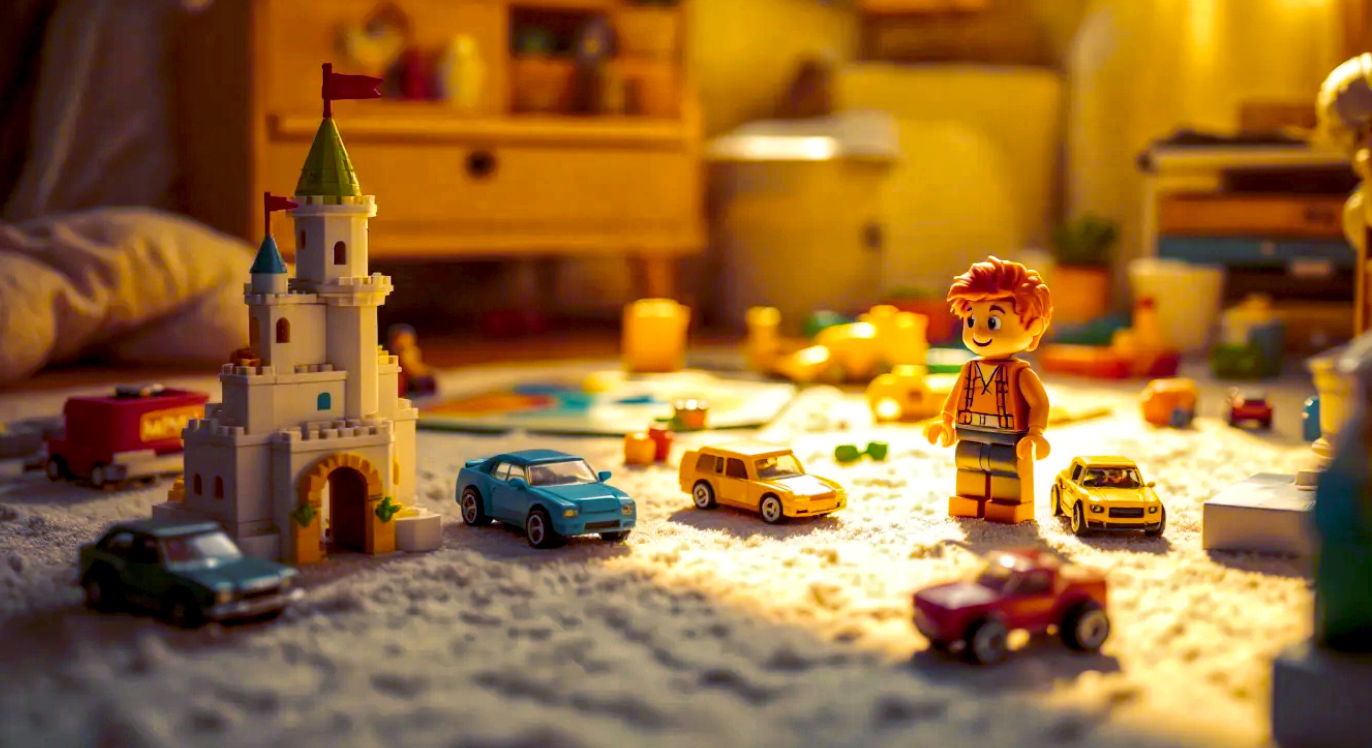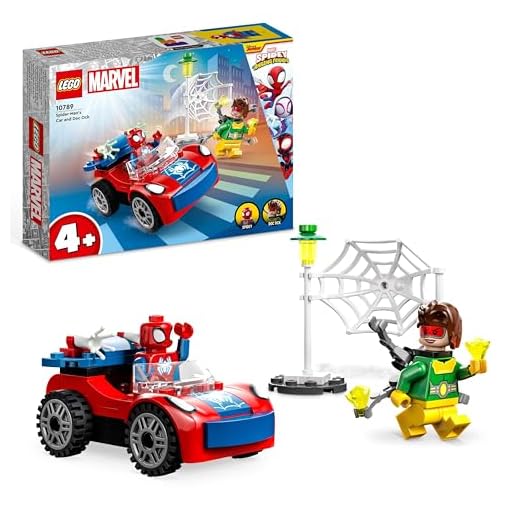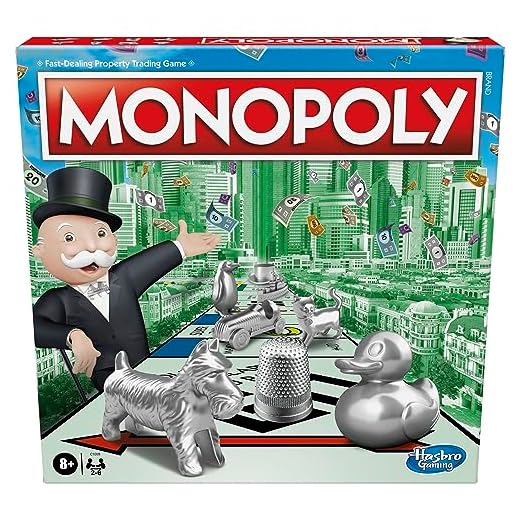From the Loft to the Living Room: The Enduring Magic of Britain’s 10 Most-Loved Classic Toys
From Monopoly’s secret history to Action Man’s eagle eyes, we unbox the stories behind the 10 classic toys that British families still can’t get enough of.

This post may contain affiliate links. If you make a purchase through these links, we may earn a commission at no additional cost to you.
There’s a certain kind of magic stored in the attics and cupboards of British homes. It’s a quiet, dusty magic, tucked away in cardboard boxes. It smells faintly of old paper and plastic. It’s the magic of the classic toy—the LEGO brick that still fits perfectly, the dog-eared Monopoly board, the Teddy Bear with one button eye and a lifetime of secrets.
In a world of buzzing tablets and fleeting digital trends, these physical, tangible objects shouldn’t really stand a chance. And yet, they do. They don’t just survive; they thrive. A child today can be just as captivated by a simple wooden train set as their great-grandparent was a century ago. Why? What’s the secret sauce that makes a toy timeless?
It’s not just about nostalgia, though that’s a big part of it. The enduring appeal of these classics lies in their simplicity and their incredible power to unlock a child’s imagination. They are not just playthings; they are tools. Tools for building worlds, telling stories, solving problems, and connecting with other people. They are blank canvases in a box.
Join us as we unbox the stories behind ten of the greatest toys ever made—toys that have been cherished by generations of British families and are still found at the top of Christmas lists today.
1. LEGO: The Building Blocks of Imagination
It’s hard to imagine a world without LEGO. Those bright, sharp-cornered little bricks are a universal language of play. But the story of this Danish giant begins not with plastic, but with wood, in the small workshop of a carpenter named Ole Kirk Christiansen.
From a Carpenter’s Workshop to a Global Empire
In the 1930s, Ole Kirk’s business was struggling. To make ends meet, he started making wooden toys. He was a craftsman, and his toys were beautifully made. He named his company LEGO, a clever combination of the Danish words “Leg Godt,” which means “Play Well.” He didn’t know it at the time, but in Latin, “lego” also means “I put together.”
The real breakthrough came after the Second World War when plastic was the exciting new material. In 1949, the company created a plastic brick called the “Automatic Binding Brick.” It looked a bit like the LEGO we know, but the bricks didn’t stick together very well. For years, they tinkered with the design until, in 1958, they patented the iconic stud-and-tube coupling system. This was the genius spark. The tubes on the underside of the brick gripped the studs on top, creating a satisfying ‘click’ and a firm hold. Suddenly, you could build things that were strong and stable. Anything was possible.
The Genius of the ‘System of Play’
What made LEGO truly revolutionary was the idea of a “System of Play.” Every brick made since 1958 can connect with any other brick. A piece from your dad’s old set from the 1970s will fit perfectly with a brand-new Star Wars kit. This backward compatibility is almost unheard of in any other industry, and it means a LEGO collection is something that grows with a family, passed down through generations.
When LEGO arrived properly in the UK in the early 1960s, it was an instant hit. It was different from other construction toys like Meccano because it was so simple and colourful. You didn’t need any screws or tools; you just needed your hands and your imagination. The opening of LEGOLAND Windsor in 1996 cemented its place as a cornerstone of British family life.
Why We Still Can’t Resist the Click
In the digital age, LEGO’s appeal hasn’t faded. It’s the ultimate antidote to screen time. It teaches children about problem-solving, spatial awareness, and fine motor skills without them even realising it. It’s a stealth lesson in engineering and art, all rolled into one. Whether you’re following the instructions to build a massive Millennium Falcon or just making a wonky-looking house from a pile of random bricks, the core joy is the same: you are creating something from nothing. And, of course, there’s the unique pain of stepping on a stray brick in the middle of the night—a truly universal parenting experience.
2. The Teddy Bear: A Cuddly Companion for a Century
The Teddy Bear is more than a toy; it’s a confidant, a protector against monsters under the bed, and a furry shoulder to cry on. Nearly every child has one, and many adults still keep their childhood bear, a fuzzy reminder of a time when a simple cuddle could solve anything.
A Tale of Two Inventors (and a President)
The story of the Teddy Bear begins around 1902, and like all good stories, it has a couple of different versions. The American tale involves President Theodore “Teddy” Roosevelt. On a hunting trip, he famously refused to shoot a bear cub that had been tied to a tree. A political cartoon about the incident inspired a New York toymaker, Morris Michtom, to create a stuffed bear which he called “Teddy’s Bear.” It was a massive success.
At the exact same time, over in Germany, a company called Steiff was also creating a stuffed bear. Richard Steiff, an innovative designer, created a jointed bear with movable arms and legs. This bear was more lifelike and posable than anything seen before. At first, nobody was interested. But an American buyer saw it at a toy fair, ordered 3,000 of them, and the global phenomenon was born.
From Steiff to Paddington: The British Bear Hug
Britain didn’t invent the teddy bear, but it’s fair to say we perfected its character. The UK fell head over heels for the toy, and soon we created some of the most famous bears in history. There’s Winnie-the-Pooh, the “silly old bear” from the Hundred Acre Wood, created by A. A. Milne in the 1920s. And who could forget Paddington Bear, the polite refugee from Darkest Peru, found at Paddington Station by the Brown family with a label saying, “Please look after this bear.” These characters gave the teddy bear a personality, turning it from a simple toy into a friend.
More Than Just a Toy: The Psychology of Comfort
Why do we love them so much? Psychologists call objects like teddy bears “transitional objects.” They provide comfort and security, helping a young child manage the transition from being completely dependent on their parents to being more independent. The bear is a comforting stand-in for mum or dad. It’s something familiar and safe in a big, confusing world.
That powerful emotional connection is why the teddy bear will never become obsolete. It doesn’t need batteries, an internet connection, or an instruction manual. All it needs is a hug.
3. Monopoly: The Property Game That Conquered Christmas
Is it even Christmas without a furious family argument over who gets to be the dog and why you’re charging your own mother a scandalous amount of rent for landing on Mayfair? Monopoly has been a fixture of British holidays for decades, a beloved ritual of capitalist triumph and bitter defeat.
Hasbro Gaming Monopoly, Strategy Board Game for 8+ Year Old Kids, 2-6 Players, Family Games for Children and Adults
- FAST-DEALING PROPERTY TRADING GAME: It’s a classic family game night staple! Players buy, sell, dream and scheme their way to riches with Monopoly board game. For 2-6 players
- BUY, SELL AND TRADE TO WIN: Players compete to buy neighbourhoods, sell properties, charge rent and build an empire in the Monopoly strategy board game for adults and 8+ year old children
- BUILD HOUSES AND HOTELS: Love that feeling when an opponent lands on an owned property with investments? In this beloved party board game, the more players build, the more rent money they can collect. Cha-ching!
- SPEND TIME TOGETHER: With its classic Monopoly gameplay, this game for kids is one of the go-to family games for game nights or for parties with friends
The Surprising (and Controversial) Real Story
For years, the official story was that Monopoly was invented by an unemployed man named Charles Darrow during the Great Depression, who sold it to Parker Brothers and became a millionaire. It was a perfect rags-to-riches tale. The only problem? It wasn’t true.
The game was actually invented around 1904 by a progressive woman named Lizzie Magie. She called it “The Landlord’s Game,” and she designed it for the exact opposite reason we play it today. It was meant to be a warning about the dangers of monopolies and the unfairness of a system where landlords get rich while tenants get poor. She even created two sets of rules: one where everyone got rich together (the anti-monopolist set) and one where a single winner took everything (the monopolist set). Guess which one caught on?
Charles Darrow played a version of her game, tweaked it, renamed it Monopoly, and sold it as his own. The real story only came to light decades later.
Landing on Mayfair: How Waddington’s Made It British
In the mid-1930s, the British games company Waddington’s was given a copy of the American game. The head of the company, Victor Watson, thought it was brilliant but knew the American street names wouldn’t mean anything to a British audience. So he and his secretary, Marjory Phillips, took a trip to London to scout out new locations.
They whizzed around the capital, picking out the iconic streets that are now etched into our national consciousness. They chose the grand green of Mayfair and Park Lane, the bustling red of The Strand and Fleet Street, and the humble brown of Old Kent Road and Whitechapel Road. This masterstroke of localisation made the game feel instantly British. It wasn’t just a game; it was our game.
Lessons in Greed and Glory
Monopoly’s enduring magic lies in its perfect blend of luck (the roll of the dice) and strategy (which properties to buy, when to build houses). It’s a simple simulation of high finance that anyone can understand. It teaches kids about money, negotiation, and the crushing despair of landing on someone’s hotel-laden property. More than that, it’s a social event, a rare occasion in the modern world where a family will sit around a table together for hours, talking, laughing, and plotting each other’s bankruptcy.
4. Barbie: More Than Just a Doll
For over sixty years, she has been a fashion icon, a career woman, an astronaut, and a source of endless controversy. She is, of course, Barbie. Instantly recognisable from her impossible proportions and dazzling smile, this 11.5-inch piece of plastic is arguably the most famous doll in history.
The American Teenager Who Took Over the World
Barbie was the brainchild of Ruth Handler, the co-founder of the toy company Mattel. She noticed her daughter, Barbara, playing with paper dolls, giving them adult roles and ambitions. At the time, most dolls were baby dolls, designed to encourage girls to be little mothers. Ruth saw a gap in the market for a doll that let girls imagine their future selves.
The inspiration for Barbie’s look came from a German doll called Bild Lilli, a glamorous, shapely character from a comic strip. Handler bought one on a trip to Europe, redesigned it, and named the new doll “Barbie” after her daughter. Barbie debuted at the New York Toy Fair in 1959. Most toy buyers hated her. They thought her adult figure was too risqué. But kids loved her. Mattel sold 300,000 Barbie dolls in the first year alone.
From Sindy’s Rival to a Modern Icon
When Barbie arrived in the UK, she faced some stiff competition from a very British rival: Sindy. Launched in 1963, Sindy was marketed as “the girl next door.” She had a flatter chest, a rounder face, and a more wholesome, less glamorous image than the American import. For years, British girls were either “a Sindy girl” or “a Barbie girl.” But Barbie’s global marketing power and ever-expanding universe of careers, cars, and dreamhouses eventually saw her win the battle for the British bedroom floor.
The Ongoing Debate: Role Model or Problematic Plastic?
Barbie has never been far from criticism. For decades, people have argued that her unrealistic body shape promotes a negative body image for young girls. Mattel has responded to this over the years. Today, you can buy Barbie dolls with a huge range of skin tones, body types (curvy, tall, petite), and physical disabilities.
The 2023 blockbuster movie supercharged the conversation, reframing Barbie as a complex symbol of feminism and consumer culture. Love her or hate her, you can’t deny her staying power. Barbie endures because she constantly evolves. She reflects the changing aspirations of women in society. She’s been a doctor, a vet, a computer engineer, and president. At her core, she remains what Ruth Handler always intended her to be: a tiny mannequin on which girls can project their biggest dreams.
5. Action Man: The Hero with Eagle Eyes
For a generation of British boys, he was the ultimate hero. He could drive a tank, scuba dive in the bath, and survive a parachute drop down the stairs. He was Action Man, the “movable fighting man” who brought adventure into the living room.
ACTION MAN from Peterkin | Night Ops | 12" action figure with 30 points of articulation and accessories | 4th Generation Special Edition | Action Figures |…
- ACTION MAN REPORTING FOR DUTY: This classic brand has been with us since 1966 when he took the UK market by storm
- NEW GENERATION: It’s now time to introduce the all-new Action Man
- LIMITED EDITION: Each of the new Action Man figures has a new body, new uniform and a vintage style head with detailed features
- GENUINE MOVABLE ACTION FIGURE: Each Action Man has 30 points of articulation
- CLASSIC FEATURES: Each Action Man still has the distinctive scar and comes complete with life-size version of the iconic dog tag
Britain’s Answer to G.I. Joe
Action Man was born in 1966, but his story starts in America with G.I. Joe. The US company Hasbro had created the world’s first “action figure” (they deliberately avoided the word “doll” to appeal to boys). It was a huge hit, and a British toy company called Palitoy, based in Leicestershire, licensed the idea for the UK market.
They didn’t just copy G.I. Joe; they gave him a British identity. They named him Action Man and created a range of authentically British military outfits, like the Coldstream Guards and the Argyll and Sutherland Highlanders. He was our hero, for our kids.
Flocked Hair, Gripping Hands, and Real-Life Adventures
Palitoy were masters of innovation. In the 1970s, they introduced a series of brilliant new features that cemented Action Man’s legendary status. First came the soft, fuzzy “flocked” hair, which felt much more realistic than painted plastic hair. Then came the “gripping hands,” which were made of a different plastic that allowed him to hold his rifle or other accessories properly.
But the masterstroke was “Eagle Eyes.” A small lever on the back of his head allowed you to move his eyes from side to side, giving him a shifty, realistic gaze. It brought the toy to life. These innovations, combined with incredible accessories like tanks, helicopters, and deep-sea diving gear, made Action Man the must-have toy of the 70s.
The Rise, Fall, and Nostalgic Return
By the 1980s, Action Man’s star began to fade. The world of toys was changing. Star Wars figures were smaller and cheaper, and the old 12-inch hero started to look a bit dated. Palitoy ceased production in 1984, and Action Man was officially retired.
But you can’t keep a good hero down. He has been revived several times since, but for the men who grew up with him, it’s the original Palitoy figure that holds the real magic. He represents a kind of hands-on, imaginative play that feels a world away from video games. He was a toy that encouraged you to go outside, get your knees muddy, and invent your own epic adventures.
6. Hornby: The Little Trains That Built a Big Hobby
There’s something uniquely captivating about a model railway. It’s a miniature world, perfectly ordered, where you are the stationmaster, the driver, and the god of the entire tiny universe. In Britain, one name is synonymous with this beloved hobby: Hornby.
Frank Hornby’s Clockwork Genius
The story of Hornby begins with a true giant of the British toy industry, Frank Hornby. From his workshop in Liverpool, Hornby had already invented two world-famous toys: Meccano (1901) and Dinky Toys (1934). In 1920, he turned his attention to trains.
He created a clockwork train set made from sheet metal, called the Hornby Dublo. It was simple, robust, and relatively cheap. For the first time, a model railway was an affordable toy for the masses, not just a rich man’s hobby. The sets were an immediate success, and soon the clickety-clack of clockwork trains could be heard in homes across the country.
From Tinplate Toys to Hyper-Realistic Models
Hornby has always moved with the times. In the 1930s, they introduced electric sets, which allowed for much smoother and more controllable operation. After the Second World War, as plastics became more common, the level of detail on the models became astonishingly realistic.
The company has always focused on modelling iconic British locomotives. Every famous engine, from the majestic Flying Scotsman to the streamlined Mallard, has been lovingly recreated in miniature. This focus on British railway heritage is the key to Hornby’s enduring appeal. It taps into a deep national affection for the age of steam and the romance of the railways.
Keeping the British Railway Dream Alive
Today, a Hornby train set is often a child’s first introduction to a hobby that can last a lifetime. It’s a pastime that connects generations—a grandad who remembers the real steam trains sharing his passion with a grandchild.
Building a model railway is about so much more than just playing with trains. It’s about research, patience, creativity, and incredible skill. It involves carpentry to build the baseboard, artistry to create the landscape, and electrical engineering to wire up the track. It’s a wonderfully immersive and rewarding hobby, and it all started with Frank Hornby’s simple clockwork idea.
7. Play-Doh: The Accidental Art Supply
That soft, salty, instantly recognisable smell. The satisfying squish as you squash it in your hands. Play-Doh is a sensory feast and a staple of nursery schools and playgroups everywhere. But this modelling clay started life as something far more boring: a wallpaper cleaner.
From Wallpaper Cleaner to Classroom Staple
In the 1930s in America, a company called Kutol Products made a pliable, putty-like substance used to clean soot off wallpaper in homes heated by coal fires. But after the war, cleaner-burning fuels and washable vinyl wallpaper meant that nobody needed wallpaper cleaner anymore. The company was facing disaster.
The solution came from a family member, a nursery school teacher who had read an article about children using the wallpaper cleaner for modelling projects. She suggested marketing it as a toy. They removed the cleaning agent, added colour and that famous almond scent, and in the mid-1950s, Play-Doh was born. It was an overnight sensation.
The Science of that Unforgettable Smell
What is that smell? The exact formula is a closely guarded secret, but it’s essentially a mix of water, salt, and flour. The smell is thought to come from a combination of ingredients, including a vanilla-like scent, designed to be pleasant and memorable. Our sense of smell is powerfully linked to memory, and for millions of people, the scent of Play-Doh instantly transports them back to the creative chaos of childhood.
Squishing, Rolling, and Shaping Young Minds
Play-Doh is more than just fun; it’s a brilliant developmental tool. Squishing, rolling, and cutting the dough helps to strengthen the small muscles in children’s hands and fingers, which is vital for learning to write. It encourages creativity and imagination, as a simple lump of dough can become anything from a snake to a pizza.
It’s also wonderfully calming. The repetitive, sensory act of playing with dough can be very soothing for anxious children (and adults!). It’s a cheap, cheerful, and endlessly versatile toy. Its magic lies in its total lack of rules. There’s no right or wrong way to play with it, only your way.
8. Matchbox: The Pocket-Sized British Motoring Legend
For kids of a certain era, your wealth could be measured by the weight of the Matchbox cars in your pockets. These tiny, perfectly detailed die-cast vehicles were affordable, collectible, and a passport to a world of imaginary traffic jams and vroom-ing engine noises.
Matchbox Cars Playset, 4-Level Toy Garage with Track Play, Kid-Powered Elevator, Car Repair Station, Spiral Ramp, With 1:64 Scale Toy Tow Truck, CJM67
- Großes vierstöckiges Autocenter mit lebensechten Aktivitäten und Funktionen
- Vier Stockwerke mit Aktivitäten: spiralförmiges Rampenteil, Zapfsäule, Kran, Strecken und funktionierender Aufzug
- Auch eine Premium-Waschanlage für alle Matchbox-Fahrzeuge ist dabei
- Servicestation für die Reparatur von Matchbox-Fahrzeugen
- Enthält einen Matchbox-Abschleppwagen, damit es gleich loslegen kann
“1-75”: A Revolution in Miniature
The story begins in post-war London with a company called Lesney Products. In 1953, one of the founders, Jack Odell, created a tiny, beautiful model of the Queen’s Coronation Coach. It was a huge success. He followed it up with a miniature steamroller. His daughter’s school had a rule that children could only bring in toys that could fit inside a matchbox, so he scaled his steamroller down to fit. And with that, the Matchbox brand was born.
The company’s genius idea was the “1-75” series. They created a range of 75 different miniature vehicles, from everyday cars like the Ford Anglia to buses, tractors, and fire engines. When a new model was introduced, an old one was retired, keeping the range fresh and fuelling the desire to collect them all. The tiny matchbox-style boxes they came in were iconic, with beautiful illustrations of the vehicle inside.
The Petrol-Scented Rivalry with Hot Wheels
For years, Matchbox ruled the die-cast world with its focus on realistic models of real-life British and European vehicles. But in 1968, a major challenger appeared from America: Mattel’s Hot Wheels. Hot Wheels were different. They were brightly coloured, fantasy “hot rod” designs, and they were built for speed, with special low-friction axles.
This sparked the great die-cast rivalry. British kids were often loyal to the realism of Matchbox, while the flashy American speed of Hot Wheels also won many fans. The competition forced both brands to innovate, resulting in a golden age of miniature cars.
Why Collecting Tiny Cars Never Gets Old
Matchbox cars are still popular today, though the company is no longer British-owned. Their appeal is multi-layered. For young children, they are simply great toys for imaginative play. They are sturdy, tactile, and perfect for creating epic stories on the living room carpet.
For adults, they are powerful objects of nostalgia and highly sought-after collectibles. A rare Matchbox car from the 1960s in its original box can be worth thousands of pounds. They are tiny metal time capsules, perfectly preserving the everyday automotive history of Britain.
9. The Rubik’s Cube: The Colourful Puzzle That Baffled a Generation
In the early 1980s, a strange, colourful cube from Hungary took over the world. It was on every desk, in every school bag, and on every television show. It was, of course, the Rubik’s Cube, a puzzle so brilliantly simple in its concept and so infuriatingly difficult in its execution that it became a global obsession.
Rubik’s Cube, The Original 3×3 Colour-Matching Puzzle, Classic Problem-Solving Cube
- THE ORIGINAL RUBIK’S CUBE: A combination of mathematics, art and science – the iconic Rubik’s Cube challenges your mind and problem-solving skills. The classic 3×3 Rubik’s Cube is the world’s best-known addictive puzzle and has fascinated fans since its launch in 1980. A true icon
- TURN, TWIST AND REPEAT: The Rubik’s Cube features six different coloured sides, each made up of nine squares. Once the faces are jumbled up, you are going to need to twist, turn and rotate the Rubik’s Cube until each of the six faces has only one colour
- A MUST HAVE FOR PUZZLE LOVERS: This original cube has 43,252,003,274,489,856,000 combinations, but only one solution. Do you have what it takes to solve the world’s favourite puzzle?
- IMPROVED PLAY: All the features of the original cube but with faster, smoother and more reliable play. No more frustrating snagging or popping core
- Includes: Rubik’s Cube 3×3
An Architect’s Teaching Tool Turned Global Craze
The Cube was invented in 1974 by Ernő Rubik, a Hungarian architect and professor. He wasn’t trying to create a toy. He wanted a physical object to help him teach his students about 3D geometry and spatial relationships. He built a small cube from 27 smaller blocks and worked out a mechanism that allowed the parts to twist and turn without the whole thing falling apart.
After he built it, he scrambled it. It then took him over a month to solve it for the first time. He realised he had created something special: a puzzle with an astronomical number of possible combinations (over 43 quintillion, to be precise) but only one correct solution. It was launched as the “Magic Cube” in Hungary before being renamed the Rubik’s Cube for its international release in 1980. Between 1980 and 1983, it’s estimated that over 200 million Cubes were sold worldwide.
The 80s Sensation and the Agony of the Peel
The Cube was the perfect craze for its time. It required no batteries, made no noise, and could be played anywhere. It was a solitary challenge, a battle of wits between you and the puzzle. For every person who learned the algorithms and could solve it, there were dozens more who resorted to the ultimate cheat: peeling off the stickers and rearranging them. Books promising solutions became bestsellers, and the Cube became a symbol of the decade.
The Modern World of Speed-Cubing
You might think the Cube is just an 80s relic, but it’s more popular now than ever. The internet has allowed a global community of “cubers” to connect, share solutions, and compete. The world of speed-cubing is a mind-boggling spectacle where competitors solve the puzzle in a matter of seconds—often blindfolded or one-handed. The world record is currently under 3.5 seconds.
The Cube endures because it’s a perfect puzzle. It’s easy to understand the goal but incredibly challenging to achieve it. It teaches patience, perseverance, and logical thinking. It’s a workout for the brain, disguised as a toy.
10. The Slinky: The Simple Spring of Endless Fun
Some of the best toys are born from happy accidents. The Slinky, that mesmerising metal spring that can “walk” down stairs, is a perfect example. It’s a toy so simple it’s almost not a toy at all, yet it has captivated children with its magical movement for over 75 years.
WOW! STUFF Super-Size Metal Spring Toy – Giant Stretchy Slinky for Kids and Adults – Classic Sensory STEM Toy, Performs Tricks, Walks Downstairs, Robust and…
- STRETCHY SPRING TOY: Twice the size for twice the fun. High quaity and extremely robust when fully stacked the coil measures 9cm in diameter and 11 cm high
- SUPER-SIZE YOUR PLAY: Performs a number of fun tricks. Jumps from hand to hand or watch it tumble down the stairs and spring from table tops as it stretches and re-forms itself with only the aid of gravity and its own momentum
- CLASSIC CHILDHOOD TOY: Tip it over the stairs and watch it walk end-over-end in a mesmerising fluid motion. Stimulating sensory play – strike the spring to create a laser gun sound effect
- STEM LEARNING FROM POULAR SCIENCE – Slinky’s and similar springs can be used to show the principles of Hooke’s law, to simulate the properties of waves and to demonstrate the effects of gravity
- FUN FOR ALL AGES: Children and Adults, Boys and Girls alike will love this super metal coiled spring Suitable for Ages 5 and Over
- OFFICIAL POULAR SCIENCE MERCHANDISE- Authorised and licensed by Bonnier Consumer Products
A Happy Accident on a Battleship
In 1943, a naval engineer from Philadelphia named Richard James was working on a way to use springs to keep sensitive equipment steady on moving ships. He accidentally knocked one of his prototype springs off a shelf and, instead of just clattering to the floor, it gracefully “walked” down a stack of books. In that moment, he saw not a piece of engineering, but a toy.
His wife, Betty, saw the potential too. She went through a dictionary to find a suitable name and settled on “Slinky,” a Swedish word meaning sleek or graceful. At first, no toy shops were interested. So, in 1945, Richard and Betty got permission to demonstrate their spring at a department store. They sold their entire stock of 400 Slinkys in 90 minutes.
The Physics of a Walking Spring
The Slinky’s magic is pure physics. When you set it at the top of a set of stairs, gravity pulls the top coil down. But as it falls, it transfers its energy along the spring, which causes the Slinky to flip over onto the next step down. The process repeats, and the Slinky appears to walk.
It’s a simple, elegant demonstration of momentum and gravity. But you don’t need to understand the science to appreciate the joy of watching it go. The rhythmic, clattering sound it makes as it descends is one of the great, simple pleasures of childhood.
Proof That the Best Ideas are Often the Simplest
The Slinky has remained virtually unchanged since the 1940s. While plastic, multi-coloured versions now exist, the classic metal Slinky is still the best. It’s a testament to the power of a simple, brilliant idea. It doesn’t pretend to be anything other than what it is: a spring. It has no backstory, no accessories, no brand universe. Its play value comes entirely from its physical properties. In a world of complex, over-engineered toys, the Slinky is a refreshing reminder that sometimes, the simplest things are the most fun.
Conclusion: Why Do These Toys Endure?
So, what is it that links a Danish plastic brick, a Hungarian puzzle, and an American spring? What is the common thread that makes these toys, and others like them, timeless?
The answer is beautifully simple: they put the child in control.
These are not “one-trick” toys that do something for you at the press of a button. They are open-ended play systems. A LEGO brick doesn’t tell you what it wants to be; it asks you what you want it to be. A pot of Play-Doh can become anything you can imagine. An Action Man needs you to invent his mission. These toys are 90% imagination and 10% plastic, wood, or metal.
They also provide a vital, tangible alternative to the flat, frictionless world of screens. They have weight, texture, and smell. They require physical dexterity and patience. They encourage social play, bringing families together around a Monopoly board or a pile of LEGO.
In the end, the toys we remember most fondly are not the ones that did the most, but the ones that allowed us to do the most. They are the props for the incredible stories we told ourselves, the tools we used to build our imaginary worlds, and the quiet companions on our journey through childhood. And that’s a kind of magic that will never go out of style.
Further Reading
For those interested in delving deeper into the fascinating world of toys, here are some highly respected resources:
- The V&A Museum of Childhood: A wonderful resource for the history of toys and play, with extensive online collections and articles.
- The Strong National Museum of Play: An American museum that is home to the National Toy Hall of Fame and provides incredible historical detail on classic toys.
- The Hornby Visitor Centre: Located in Margate, this is a must-visit for fans of model railways, Scalextric, and other classic British brands.
- Love Figures: A website dedicated to exploring, archiving and promoting the best action figures and toys from the past, present and future.































